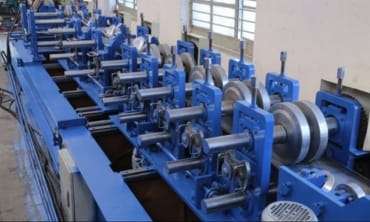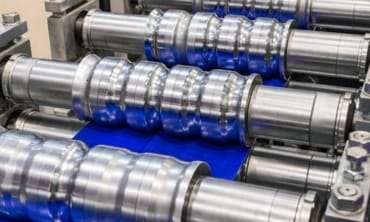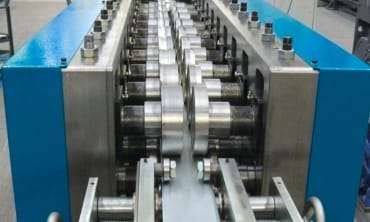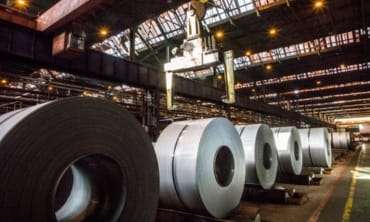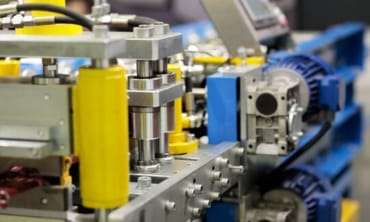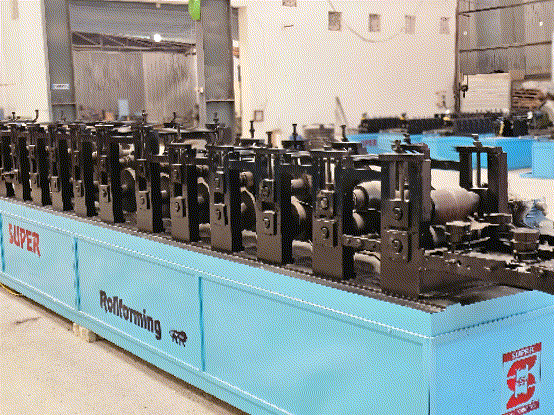I. Introduction
Roll forming machines stand as silent sentinels behind the scenes, shaping countless products that we encounter daily. From the sleek body panels of automobiles to the sturdy frames of skyscrapers, roll forming machines play an integral role in modern manufacturing. In this exploration, we delve into the rich tapestry of their history, tracing their evolution from humble beginnings to indispensable tools of industry.
II. Early Origins and Development
A. Industrial Revolution and Early Metalworking Techniques
The roots of roll forming can be traced back to the dawn of the Industrial Revolution, a time when manual craftsmanship gave way to mechanized processes. Early metalworkers utilized rudimentary tools and techniques to bend and shape metal sheets manually. While effective for simple tasks, these methods were labor-intensive and lacked the precision demanded by emerging industries.
B. Emergence of Early Roll Forming Concepts
As industrial demands grew, so too did the need for more efficient metalworking methods. The concept of roll forming began to take shape, inspired by the age-old practice of rolling dough. By passing metal strips through a series of rollers, craftsmen could gradually shape them into desired profiles. While primitive by today’s standards, these early experiments laid the groundwork for future innovations.
C. Innovations in the 19th and Early 20th Centuries
The 19th century witnessed significant advancements in roll forming technology, fueled by the rise of steel as a dominant building material. Engineers developed specialized machines capable of producing complex profiles with greater speed and accuracy. Hydraulic and mechanical systems replaced manual labour, ushering in a new era of productivity. By the early 20th century, roll forming had become a staple of metalworking industries worldwide.
III. Technological Advancements in the 20th Century
A. Introduction of Electric and Hydraulic Systems
The mid-20th century brought about further refinements in roll forming technology with the widespread adoption of electric and hydraulic systems. These innovations allowed for greater control and precision, enabling manufacturers to produce a diverse range of profiles with ease. Improved material handling systems also enhanced efficiency, reducing downtime and increasing output.
B. Automation and Computerization
With the advent of computers, roll forming entered a new phase of automation and computerization. Programmable logic controllers (PLCs) and digital feedback systems revolutionized production processes, offering unparalleled levels of accuracy and repeatability. CAD/CAM software allowed designers to create intricate profiles with minimal effort, further expanding the capabilities of roll forming machines.
C. Expansion into Diverse Industries
The versatility of roll forming machines led to their widespread adoption across diverse industries. From automotive to aerospace, manufacturers embraced roll forming as a cost-effective solution for producing complex components. The ability to work with a variety of materials, including aluminium, stainless steel, and composites, further solidified their position as indispensable tools of modern manufacturing.
IV. Modern Roll Forming Machines
A. Advanced Materials and Precision Engineering
Today’s roll forming machines boast advanced materials and precision engineering, allowing for the production of highly intricate profiles with tight tolerances. State-of-the-art controls and servo-driven systems ensure consistent quality across large production runs, minimizing waste and maximizing efficiency. Advanced tooling technologies, such as quick-change systems and modular designs, enable rapid setup and reconfiguration, making roll forming more adaptable than ever before.
B. Customization and Versatility
One of the key advantages of roll forming machines is their inherent flexibility and customization capabilities. Manufacturers can easily tailor profiles to meet specific customer requirements, whether it’s a unique shape, size, or material. With the ability to integrate additional processes such as punching, notching, and embossing, roll forming machines offer a one-stop solution for producing complex components with minimal secondary operations.
C. Integration with CAD/CAM Systems
The integration of roll forming machines with CAD/CAM systems has further streamlined the design and production process. Designers can create virtual prototypes and simulate forming processes before a single sheet of metal is rolled, reducing time-to-market and minimizing costly errors. Real-time monitoring and data analytics provide valuable insights into production performance, allowing manufacturers to optimize processes and maximize profitability.
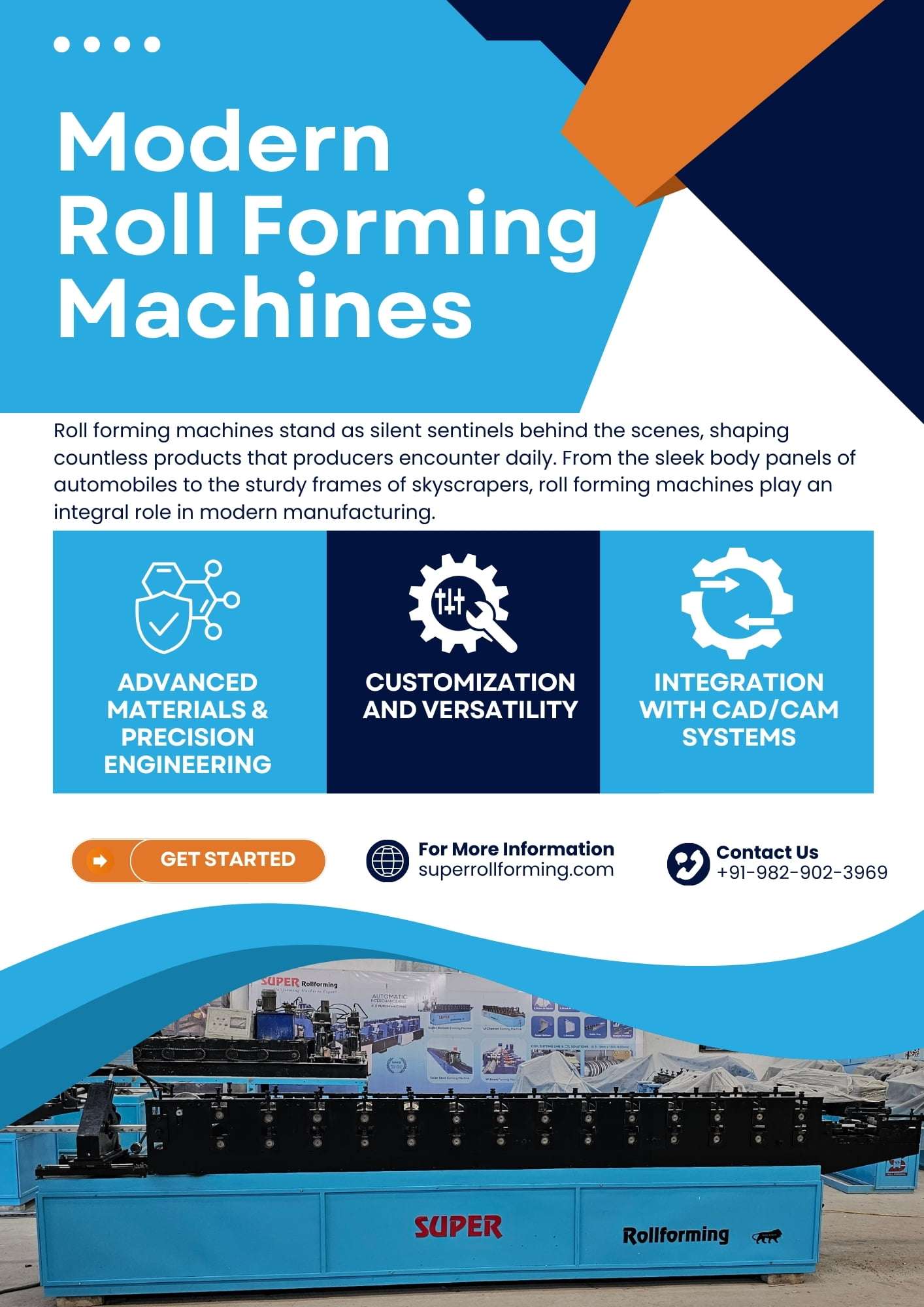
V. Applications Across Industries
A. Automotive Sector
In the automotive sector, Roll Forming Machines play a vital role in producing structural components such as chassis rails, door frames, and bumper reinforcements. Their ability to produce lightweight yet durable profiles makes them ideal for applications where strength and efficiency are paramount. With the automotive industry’s shift towards electric and autonomous vehicles, roll forming machines are poised to play an even larger role in shaping the vehicles of tomorrow.
B. Construction and Infrastructure
In the construction and infrastructure sectors, roll forming machines are used to manufacture a wide range of building materials, including roofing panels, wall cladding, and structural beams. Their ability to produce long, continuous lengths of material makes them well-suited for large-scale projects where speed and efficiency are critical. With the growing emphasis on sustainability and energy efficiency, roll forming machines are increasingly being used to produce green building materials such as solar panels and insulated panels.
C. Aerospace and Defense
In the aerospace and defense industries, where precision and reliability are paramount, roll forming machines are used to produce a variety of components including fuselage frames, wing ribs, and engine housings. Their ability to work with exotic materials such as titanium and carbon fiber makes them indispensable tools for manufacturing aerospace-grade components with the highest levels of strength and durability.
VI. Future Prospects and Emerging Trends
A. Adoption of 3D Printing and Additive Manufacturing
While traditional roll forming remains a staple of modern manufacturing, emerging technologies such as 3D printing and additive manufacturing are beginning to make inroads. These disruptive technologies offer new possibilities for producing complex geometries with minimal waste, challenging the traditional advantages of roll forming. However, as 3D printing technology continues to mature and costs decline, we may see a convergence of these two manufacturing methods, with roll forming machines being used in conjunction with additive processes to achieve the best of both worlds.
B. Sustainability and Eco-Friendly Practices
With growing concerns over environmental sustainability, manufacturers are increasingly turning to eco-friendly practices to reduce their carbon footprint. Roll forming machines, with their ability to produce lightweight components with minimal material waste, are well-positioned to meet the demands of a greener future. By using recycled materials and optimizing production processes, manufacturers can reduce energy consumption and minimize environmental impact while maintaining high levels of productivity and efficiency.
C. Enhanced Automation and Robotics Integration
As automation technologies continue to advance, we can expect to see further integration of robotics and artificial intelligence into roll forming machines. Robotic arms equipped with advanced sensors and vision systems can perform tasks such as material handling, tool changing, and quality inspection with unparalleled speed and precision. By automating repetitive tasks and reducing reliance on human operators, manufacturers can increase throughput, improve quality, and reduce labour costs, making roll forming even more competitive in today’s global Marketplace.
VII. Conclusion
In conclusion, the history of Roll Forming Machines is a testament to Human Ingenuity and Innovation. From humble beginnings as simple hand-operated devices to the sophisticated, computer-controlled systems of today, roll forming machines have continually evolved to meet the changing needs of industry. As we look to the future, the role of roll forming machines in shaping our world will only continue to grow, driven by advancements in technology, changes in consumer preferences, and the ever-present pursuit of progress.

